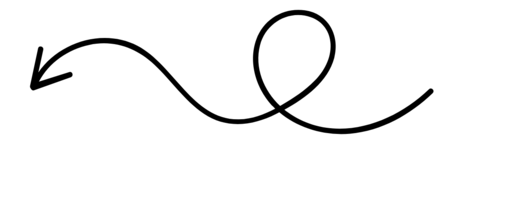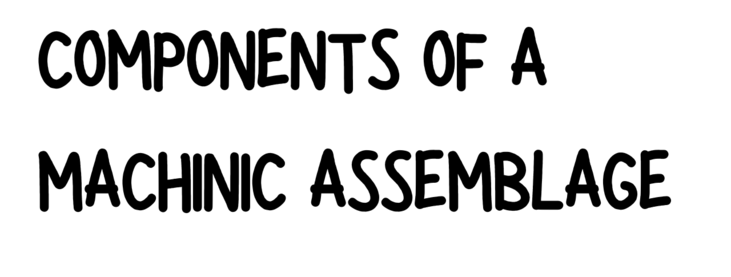“Desire does not lack anything; it does not lack its object. It is, rather, the machine of a machine: desire is machine, a multiplicity of machines, as a machinic assemblage.” (Deleuze and Guattari 1983, 26)
While the original work of Deluze and Guattari center around desire in its socio-political embedding and touches its conceptualisation in traditional psychoanalysis (Freud, Lacan), our primary interest here has to do with articulations on structure (or its dynamics/traversy) as well as with compositional and organisational matters that are articulated in ‘A Thousand Plateaus’ through the logic of assemblage. (de Assis 2021,11)
Paulo de Assis proposes to access the theory of assemblage as a “varied ecology of concepts and practices that enable new understandings of dynamic processes—without pinning them down to analytical definitions or constraints.” (2018, 77) Further he argues that while structuralism could achieve a number of results in areas like for instance linguistics and epistemology, it failed to recognise the dynamic systems that would embrace paradoxical behaviours as part of their structure, rather than errors. Further he quotes Deleuze in conversation with Claire Parnet:
“The difficult part is making all the elements of a non-homogeneous set converge, making them function together. Structures are linked to conditions of homogeneity, but assemblages are not” (Deleuze and Parnet, 52).
Paolo De Assis describes the transition from a desiring machine to an assemblage as a “fundamental paradigm shift from structure to machine, the latter being an operative (and not descriptive) concept in relation to structure.” (de Assis 2018, 79)
In the book Artmachines, Anne Sauvagnargues offers to look at the notion of machinic assemblage from the analogy of a hammer and nails:
Another component that constitutes this labor organisation is a worker who activates the technical tool against the surface: “the operative context of the becoming of a motor gesture in its existential, cultural territory, which implied its specific assemblage of production”. (Sauvagnargues, 186)
The Desire Machine project is situated within a broader research project Atlas of Smooth Spaces that is concerned with the space that is created around performers, shaped through performers and accessed by performers:
“Rather than extracting the performer as the subject from its embedding in an ambient space, we are distinctively and decisively concerned with that ambient space itself, namely with the perceptive space that complements the performers, with that space’s own proper quality and its own dynamics. Which experiments allow us to describe, communicate and compose these space experiences across artistic practices?”
Drawing from these questions the Desire Machine came to be an experiment that is concerned with artistic production in its structural and ideological organization rather than with an artistic product itself. Derived from the philosophical construct ‘desiring machine’ coined by Deluze and Guattari, the project was set to explore “a conception of interaction between thought and matter as a cutting of flows, and a social conception of the desiring individual, no longer solitary but ‘machined’. (Artmachines, 2016, p.188).
Here it might be useful to clarify the non-representational relation between the philosophical framework and the artistic investigation.The application of the desiring machine concept into a productive performative space is perceived as a condition of possibility for a collaborative artistic production that is set apart from the representational, reactive or hierarchical dependencies and that is articulated through the competencies and agencies of the participating researchers.
This project is the culmination of a collaborative exploration by three artistic researchers, each contributing their unique yet fluid perspectives to the conceptual and practical development of the Desire Machine. Leonhard Horstmeyer, Maria Shurkal and Adrián Artacho collectively navigate the intersections of movement, sound, and the logic of assemblage.
Sauvagnargues outlines six simultaneous components of a machinic assemblage that are concerned with individuation as well as with modes of collective subjectivation. They are described as the following:
-
The ones that are concerned the material and energetic
-
Semiotics that regulate the production: the functioning of any machine requires diverse discursive semiotics: written codes, printed marks, assemble instructions, instructional diagrams
-
A corporeal individuation navigated by flows and decentred from the sovereign organisation of the brain
-
Modes of representation that code the social perception of the flow of the machinic and are not articulated through the strata of language
-
The regulative strata of detached subjectivity that is not conditioned by the desiring machines but acts as a permanently open possibility for its production
-
Abstract machines that keep together the functional arrangement of the five heterogeneous components
-
To sum up, while the notion of a desiring machine further articulated through the logic of assemblage shifts away from the structure, it does offer another condition of operation that is articulated through a heterogeneous multitude of stable components. In the words of Elisabeth Grosz:
“[...] It is not that the world is without strata, totally flattened; rather, the hierarchies are not the result of substances and their nature and value but of modes of organization of separate substances. They are composed of lines, of movements, speeds, and intensities, rather than of things and their relations. Assemblages or multiplicities, then, because they are essentially in movement, in action, are always made, not found. They are consequences of a practice…” (167)
“no machine or technical tool exist by itself for these artifacts only function in an assembled (agence) milieu of individuation, which constitutes its conditions of possibility: there is no hammer without a nail, and thus the interaction between a multitude of technical objects makes the fabrication of hammers and nails possible while also forming the conditions of their utilisation and the practices and habits associated with them” (Sauvagnargues, 186)




